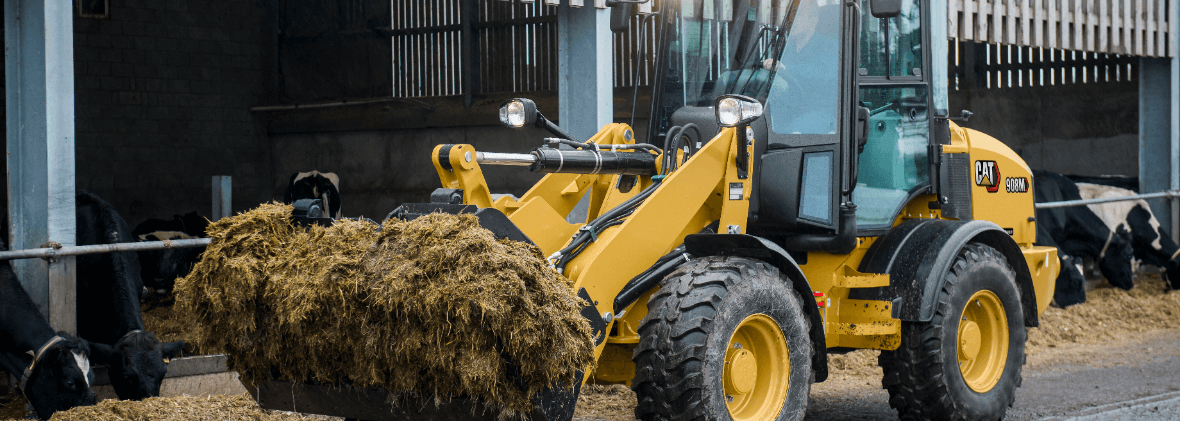
What Is a Front-End Loader?
If your projects involve loading, scooping, or transporting sand, gravel, dirt, or stone, a front-end loader is a machine worth knowing. These versatile machines also work well with brooms, forks, rakes and snow plows.
What Are the Key Features of a Front-End Loader?
Front-end loaders, often called wheel loaders, have several defining characteristics:
- Wheels: Wheeled loaders move faster than tracked machines; some models can travel up to 25 mph.
- Enclosed cab: Operators sit safely and comfortably in climate-controlled cabs with wide windshields for enhanced visibility and protection.
- Mounting systems: Couplers allow operators to quickly attach and switch work tools to expand the loader’s capabilities.
What Are the Benefits of Using a Front-End Loader?
Adding a loader to your fleet can provide multiple jobsite advantages:
- Maneuverability: Four-wheel-drive capability allows loaders to navigate rugged or soft terrain without getting stuck.
- Mobility: Their speed means loaders can complete more trips in less time, boosting productivity.
- Size Range: Loaders come in compact, small, medium and large sizes, with specialty models for waste and material handling.
What Attachments Work With Front-End Loaders?
Attachments transform loaders into multi-purpose machines:
- Buckets: Various sizes and types enable moving yards of material.
- Snow plows: Clear streets, highways and parking lots.
- Rakes and grapples: Handle trees, rocks and hay bales.
- Forks: Turn a loader into a lift truck.
Attachments save time and reduce costs by letting one machine handle several tasks. Quick couplers, for example, allow operators to switch tools without leaving the cab.
What Is a Front-End Loader Used For?
Front-end loaders are some of the most versatile pieces of heavy equipment. Common applications include:
- Material removal: Moving loose dirt, stone, or rubble on construction, quarry, or mining sites
- Snow removal: Clearing highways, city streets and parking lots with a snow blade
- Agriculture: Scooping feed, seed, or manure and grappling hay bales
- Material handling: Using forks to lift and transport heavy loads
- Site clearing: Removing rubble and debris from demolition sites
- Waste handling: Transporting material at salvage yards and recycling centers
Rent Front-End Loaders From The Cat® Rental Store
Need a loader for your next project? The Cat® Rental Store offers a wide range of front-end loaders available at competitive rates. Contact us online today to learn more. Find the Cat Rental Store near you to connect with your local dealer.
Find The Cat Rental Store Near You